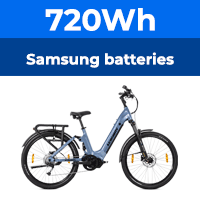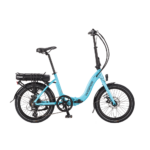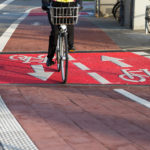I didn't mean bypass as in, modify after production. I'm talking about tests that would take place under laboratory conditions during manufacture.
By not being bypassable do you mean it couldn't be activated by any other means than someone pedalling?
Yes, I did understand you meant in that way, but no, it couldn't be done and Panasonic would refuse to try it because the results would bear no relation to reality. Let me explain.
First the physical problem, the pedelec electronics and controller are integrated into one dual feedback system in a motherboard, so it would be necessary to have a controller separately built to get rid of the pedelec elements. Unfortunately that cannot then be the same since in the original, not only does the pedelec torque sensing system control the output, the motor feedback also controls how the torque sensing system issues power, a two way system in which the pedelec torque sensing is vital and integral.
Much bigger though is the operational problem. Even if a separate controller was permissible, the motor would then run continuously like other bike motors, but the Panasonic unit doesn't work like that. Instead it's a servo motor system that runs in pulses, mimicking the rider's leg muscle actions. When riding, at crank top dead centre the motor is effectively off since there is no pedal torque force. As the crank angle progresses and the leverage gain enables pedal power into the sensor, the motor gains power, reaching a maximum when the cranks are roughly horizontal when the leverage advantage is best. Then as the crank travels to bottom dead centre the power falls and effectively cuts off again, ready for the next down stroke. This is an accurate bionic imitation of the rider muscle action.
You can see that this is roughly a 50% power system, but if the power was graphically presented, it would be neither a triangle wave nor a sine wave. It would appear like a pinched sine wave with a logarithmic rising front and an anti-logarithmic tail.
This is where the more complex elements appear. The rider's pedal action would alter that profile since each person's pedal action differs. The "lead footed" would emphasize the central power peak, losing out elsewhere, while the experienced cyclist who rotated the foot about the ankle to give some power through the top and bottom dead centres would smooth out the response somewhat and gain more power overall.
Now it gets more awkward, bear with me! The torque sensor pressure from pedalling determines the motor power output during each thrust, which is why I said " a maximum" above, not "the maximum", but the output pattern with speed is totally different from hub motor bikes. The hub motor will give falling torque with rising power as speed rises from zero, reaching an optimum combination at about half maximum speed. Thereafter the power and torque will fall away but the efficiency increase up to near the maximum speed.
By contrast, the normally used Panasonic system will give the roughly equal optimum combination of torque, power and efficiency at all speeds from zero to 9.4 mph (15 kph). Thereafter the torque and power will phase down progressively through to zero at 15 mph. Now, to complicate matters even more, the rider has three switchable power levels which operate within each of the control parameters already discussed, and these are continuously and optionally used while riding, high power up a hill, standard, low or off on the easier going, the patterns of use varying infinitely with every rider. For example, on my long range test to give 50 miles per charge, I used normal power and off according to conditions. David Henshaw of A to B magazine on his long range test to get 46 miles on the same bike used the low eco setting on all the time. Every rider will use the combinations of the four possibilities, off, eco, standard and high, randomly in a pattern unique to them.
You can see that this power profile is very different from a hub motor continuously running system so the two could never be comparable. Not only that, the almost infinite complexities of the system in dynamic conditions will defeat any attempt to simulate a meaningful human presence in a test.
.








